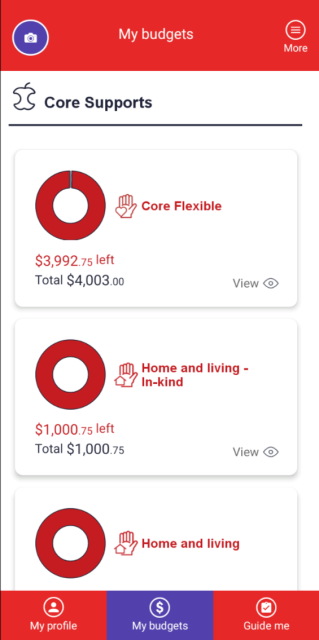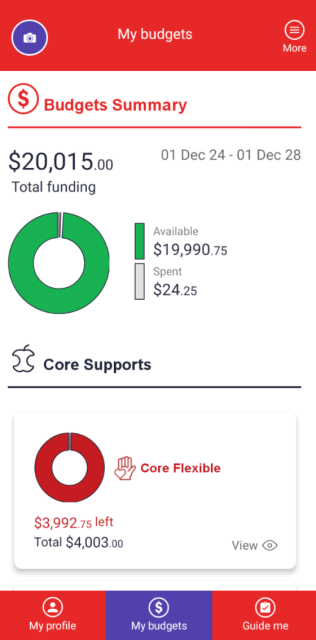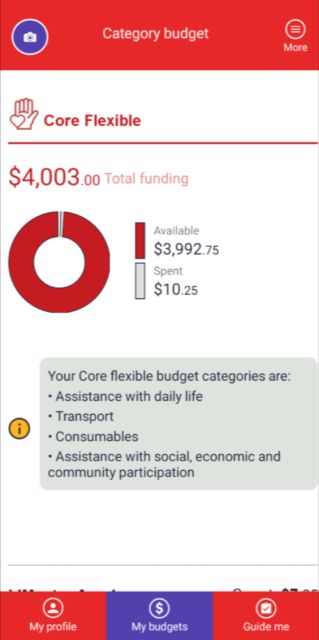If you have an NDIS Plan, chances are you have funds included in the Core supports budget. But how do Core supports work and what can those funds be used for?
Let’s take a closer look at NDIS Core funding, core supports and some examples to help you make the most of your NDIS Plan.
What are NDIS Core supports?
Core supports help you manage everyday tasks related to your disability. This is typically the most flexible part of your NDIS Plan, allowing funds to be used across various categories, depending on your plan details.
You can use your NDIS Core supports to purchase items or services needed for daily life, such as adaptive cutlery, assistance with household chores or a support worker to accompany you to community activities.
Understanding Core supports categories.
NDIS Core supports now have two types: Flexible Core supports and Stated Core supports.
Flexible Core supports.
These support categories can be flexible as long as they are ‘managed’ in the same way, for example plan managed, NDIA managed or self managed. When your funding is flexible, you can use it to buy supports from other flexible categories as long as they have been included in your plan. Check your plan to see what support categories have been included and if they’re described as flexible or stated.
Flexible categories include:
1. Assistance with Daily Life.
Help with personal tasks like showering, dressing, cooking, cleaning, household chores and Short Term Accommodation (respite)
2. Assistance with Social, Economic, and Community Participation.
Support to engage in community activities, attend appointments and participate in recreational activities or volunteer work
3. Consumables.
Funds for everyday items related to your disability, including continence products and low-cost assistive technology like adaptive cutlery
4. Transport (for most participants, Transport will be funded through Recurring supports).
Funding for transport to work, activities or appointments if you can’t access public transport due to your disability. Some participants still have Transport included in their flexible Core supports, but most people now receive separate payments from their Recurring supports budget category.
Core supports that are ‘stated’.
If you have stated (or non-flexible) supports, this means you must use your funding in the way that’s described or ‘stated’ in your plan. They may include:
1. Home and Living (for participants on PACE plans).
Supports to help you live more independently:
- Supported Independent Living (SIL)
- Medium-term accommodation
- Individualised Living Options (ILO)
- Daily life assistance in residential aged care facilities.
2. Young People in Residential Aged Care (YPIRAC) (for participants on PACE plans).
Funding for participants under 65 living permanently in residential aged care.
Here is an example of how your Core supports budgets appear in the Leap in! app. The first screen provides a summary, the second screen shows the breakdown of flexible and stated funding, and the third shows the Core Flexible total funding with the budget categories available for use outlined in the grey box.


NDIS Core supports examples:
- Help with self-care activities such as showering or dressing
- Help with household tasks and garden maintenance
- Disability-related health supports (wound care, diabetes management)
- Consumable products like continence aids and home enteral nutrition (HEN)
- Support to access social groups, community activities and recreational activities.
Check out our NDIS Consumables budget guide or visit the NDIS website for the full lists of what the NDIS will and will not fund.
5 tips for making the most of your Core supports funding.
- It can help to allocate your funding across the length of your plan to avoid overspending or underspending.
- Don’t forget you can use your Core funding flexibly as your needs change. Be sure to check which Core budget categories are in your plan.
- If you’re in doubt about what the NDIS will and won’t fund, you can find a great breakdown in our story ‘What will the NDIS pay for?’.
- If you have Capacity Building funding, you may be able to use it to learn new skills instead of relying on your Core funding.
- If you require repairs to assistive technology (such as a wheelchair or other assistive devices that you rely on for essential mobility or safety) you can use Core funding for minor repairs, but only if you’re on an original/legacy NDIS Plan. If you’re on a PACE plan, you can only pay for AT repairs from your Capital – Assistive Technology Maintenance, Repair and Rental category.
We can help.
Leap in! helps you better understand the supports you can purchase and how to get the most from your NDIS funding.
The Leap in! app also has a dedicated section for setting and managing goals which will make preparing for plan and plan reassessment meetings easier.
Call us on 1300 05 78 78, email crew@leapin.com.au or sign up to Leap in! plan management today.
Updated 09 April 2025, 21 January 2024 and 24 January 2023.


